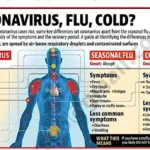







1. Systematic and detail description of life forms
o Identification, nomenclature and classification.

2. ERNST MAYR ‘The Darwin of the20th century’; Pioneered the currently accepted definition of a biological species.
3. CHARACTERSTICS OF A LIVING ORGANISM
GROWTH:
TWIN CHARACTERISTICS
•Increase in mass and increase in number
A multicellular organism grows by cell division.
In plants, the growtUnlimited & Localised
In animals, the growth is Limited & Unlocalised
Unicellular organisms grow by cell division.
Growth of living organism is from inside.
Growth cannot be taken as a defining property of living organisms as non-livings also grow in mass.(by deposition; Outside)

oREPRODUCTION
Characteristic of living organisms.
Fungi multiply through asexual spores.
In lower organisms like yeast and hydra reproduce by budding.
In PLANARIA (FLAT WORMS) TRUE REGENERATION, i.e., a fragmented organism regenerates the lost part of its body and becomes, a new organism.
The fungi, the filamentous algae, the protonema of mosses, all easily multiply by fragmentation.
In unicellular organisms like bacteria, unicellular algae or Amoeba, REPRODUCTION IS SYNONYMOUS WITH GROWTH, i.e., increase in number of cells. (Sciencegajab )
WHY REPRODUCTION IS NOT A DEFINING PROPERTY ?
Many organisms (like mule, worker bee, infertile couple) do not reproduce therefore reproduction also cannot be an all-inclusive defining characteristic of living organisms.
NON-LIVING DO NOT REPRODUCE.

o METABOLISM
The sum total of all the chemical reactions occurring in cell
METABOLISM is ABSENT IN NON LIVING
Isolated metabolic reactions in vitro are not living things but surely living reactions.


o CONCIOUSNESS
All organisms, from the prokaryotes to the most complex eukaryotes can sense and respond to environmental cues.
Photoperiod affects reproduction in seasonal breeders, both plants and animals.
All organisms control chemicals entering their bodies.
Human being is the only organism who is aware of himself, i.e., has self-consciousness.
LIVING CHARACTERISTICS

INTERACTION AT DIFFERENT LEVELS IN A ORGANISM.
4. The living thing “The living organisms are self-replicating, evolving and self-regulating interactive systems capable of responding to external stimuli.” (This content developed by biomentors classes online, mumbai)
5. All living phenomena are due to underlying interactions.
o These interactions lead to higher level of organization as well as in hierarchy of organisational complexity at all levels.
6. METABOLISM
is undisputed property of living things.
DIVERSITY IN THE LIVING WORLD:
7. The number of species between 1.7-1.8 million.
8. NOMENCLATURE
o The naming of living organisms ; same name all over the world.
9. IDENTIFICATION
o Nomenclature or naming is only possible when the organism is described correctly and we know to what organism the name is attached to.
10. For nomenclature of plants,
o International Code for Botanical Nomenclature (ICBN).
11. For nomenclature of animals
o International Code of Zoological Nomenclature (ICZN).
12. The scientific names ensure that each organism has only one name.
13. Each scientific name has two components –
o The Generic name and the specific epithet.
o Binomial nomenclature.
o This naming system was given by Carolus Linnaeus.


o Biological names are generally in Latin ; Written in italics.
o They are Latinised or derived from Latin irrespective of their origin.
o The first word in a biological name represents the genus
o The second component denotes the specific epithet (species)
o Both the words in a biological name, when handwritten, are separately underlined, or printed in italics to indicate their Latin origin.
o The first word denoting the genus starts with a capital letter while the specific epithet starts with a small letter.
o Example of scientific name of Mango Mangifera indica.

o Name of author (discoverer) appear at the end of the biological name in abbreviated form (after the species epithet).
14. BIOLOGICAL CLASSIFICATION
o Organisms are grouped into convenient categories based on some characters.
o Helps in study of all organisms.
15. Based on characteristics, all living organisms can be classified into different taxa. This process of classification is TAXONOMY.
(This content developed by Sciencegajab )
16. BASIS OF MODERN TAXONOMY
o External and internal structure,
o The structure of cell,
o Development process and
o Ecological information of organisms.
o Hence, characterisation, identification, classification and nomenclature are the processes that are basic to taxonomy
17. SYSTEMATICS includes identification, nomenclature and classification.
18. Systematics also includes evolutionary relationships between organisms.
o Word Systema (latin) means systematic arrangement of organisms.
o Linnaeus used Systema Naturae as the title of his publication.
19. Classification involves hierarchy of steps in which each step represents a rank or category.
o The category is a part of overall taxonomic arrangement, it is called the TAXONOMIC CATEGORY and all categories together constitute the TAXONOMIC HIERARCHY.
o Each category, referred to as a unit of classification represents a rank and is commonly termed as TAXON (pl.: taxa).
o In taxonomical hierarchy, there are 7 broad category (taxa) in taxonomic hierarchy.
o Species ➤Genus ➤Family ➤ Order ➤ class➤
Phylum/ Division ➤ Kingdom

20. SPECIES:
➤Taxa phylum is used in animal classification whereas division is used in plant classification.
➤Species is the lowest taxa.
➤Each taxa/category/rank represent a unit of classification.
o a group of individual organisms with fundamental similarities.
o the distinct morphological differences.
o Taxa species has the only real existence.
o capable of interbreeding or gene exchange naturally.
21. GENUS:
o a group of closely related species
o more characters in common in comparison to species of other genera.
For example, potato and brinjal are two different species but both belong to the genus Solanum.
Similarly Lion (Panthera leo), leopard (P. pardus ), Tiger (P. tigris) with several common features, are all species of the genus Panthera.
22. FAMILY: (@sciencegajab)
o Group of related genera with still less number of similarities as compared to genus and species.
o Families are characterised on the basis of both vegetative and reproductive features of plant species.
➤Three different genera Solanum, Petunia and Datura are placed in the family Solanaceae.
➤Genus Panthera, comprising lion, tiger, leopard is put along with genus, Felis (cats) in the family Felidae.
23. Order:
o Order and other higher taxonomic categories are identified based on the aggregates of characters.
o Order is the assemblage of families which exhibit a few similar characters than family.
24. CLASS:
• Related order grouped in to a class.
25. PHYLUM:
• Classes with some common characters make
o A Phylum (In Animals)
o Division (In Plant).
(This content developed by Sciencegajab)
26. KINGDOM:
• HIGHEST TAXA IN CLASSIFICATION.
• Kingdom exhibit minimum common character.
• In Whittaker’s classification there are five kingdoms.
• As we go higher from species to kingdom, the number of common characteristics goes on decreasing.
• As we go up from species to kingdom, process of classification become more complex.
27. TAXONOMICAL AIDS:
• Techniques, procedures and stored information that are useful in identification and classification of organisms
o Herbarium,
o botanical gardens,
o museum
o zoological parks,
o key manuals and
o monographs
28. HERBARIUM:
• Herbarium is a store house of collected plant specimens
o dried, pressed and preserved on sheet
o have descriptions on herbarium sheets
ocarry a label providing information about date and place of collection, English, local and botanical names, family, collector’s name, etc.

o Herbaria also serve as quick referral systems in taxonomical studies.


29. BOTANICAL GARDENS:
• They have collection of living plants for systematics reference.
• The famous botanical gardens are at Kew (England), Indian Botanical Garden, Howrah (India) and at National Botanical Research Institute, Lucknow).
30. MUSEUM:
• Museums have collections of preserved plant and animal specimens for study and reference.
• Specimens are preserved in the containers or jars in preservative solutions.
31. ZOOLOGICAL PARKS:
• These are the places where wild animals are kept in protected environments under human care and which enable us to learn about their food habits and behaviour.
• All animals in a zoo are provided, as far as possible, the conditions similar to
their natural habitats.
32. KEYS:
o tools that help in identification based on characteristics (the similarities and dissimilarities of characters or contrasting character)
o Contrasting characters in a key is called COUPLET from which one statemen is selected and the other statement is rejected.
o Each statement in a key is called LEAD.
o Keys are generally analytical in nature.
o Separate taxonomic keys are required for each taxonomic category.

33. FLORA :
o Actual account of habitat and distribution of plants of a given area.
o These provide the index to the plant species found in a particular area.
o Manuals are useful in providing information for identification of names of species found in an area.
o Monographs contain information on any one taxon.

#livingworld


